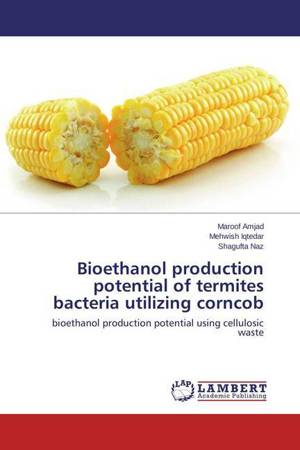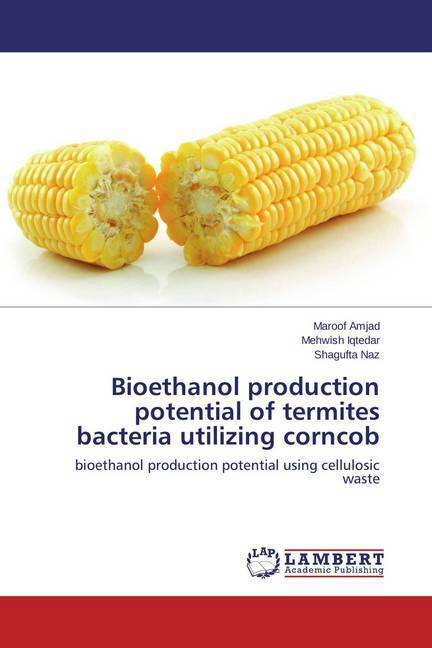
- Afhalen na 1 uur in een winkel met voorraad
- Gratis thuislevering in België vanaf € 30
- Ruim aanbod met 7 miljoen producten
- Afhalen na 1 uur in een winkel met voorraad
- Gratis thuislevering in België vanaf € 30
- Ruim aanbod met 7 miljoen producten
Zoeken
Bioethanol production potential of termites bacteria utilizing corncob
bioethanol production potential using cellulosic waste
Maroof Amjad, Mehwish Iqtedar, Shagufta Naz
Paperback | Engels
€ 80,45
+ 160 punten
Omschrijving
The current study aimed at the lab scale production of bioethanol from corncob employing cellulolytic bacteria isolated from termite gut. Cellulolytic bacteria were isolated from two local termite species including Coptotermes heimi and Microtermes mycophagous. Corn cob was de-lignified. Two fold decrease in lignin and 20% increase in cellulose was obtained after pretreatment. Among six bacterial isolated CH-1 and MYC-1 were selected for their potential cellulolytic action through halo zone formation in primary screening and substrate hydrolysis during secondary screening. Temperature, pH, substrate concentration, inoculum size, surfactants, metal ions, PEG concentration, CMCase and FPase activity were optimized for CH-1 and MYC-1. Optimal bioethanol yield was 5.45 mg/ml and 5.79 mg/ml from CH-1 and MYC-1 respectively by simultaneous saccharification and fermentation. 16S rDNA sequence analysis has shown homology with Bacillus cereus (CH-1) and Providencia vermicola. (MYC-1). Therefore it can be concluded that both isolates had shown potential bioconversion of agro-waste into fermentable sugars that later could be fermented to bioethanol.
Specificaties
Betrokkenen
- Auteur(s):
- Uitgeverij:
Inhoud
- Aantal bladzijden:
- 160
- Taal:
- Engels
Eigenschappen
- Productcode (EAN):
- 9783659621673
- Verschijningsdatum:
- 21/10/2014
- Uitvoering:
- Paperback
- Afmetingen:
- 150 mm x 220 mm
- Gewicht:
- 245 g

Alleen bij Standaard Boekhandel
+ 160 punten op je klantenkaart van Standaard Boekhandel
Beoordelingen
We publiceren alleen reviews die voldoen aan de voorwaarden voor reviews. Bekijk onze voorwaarden voor reviews.








